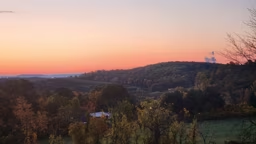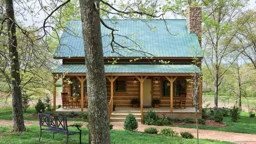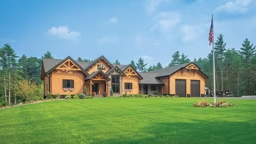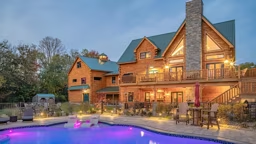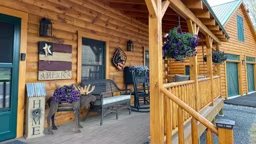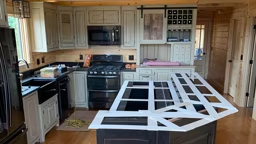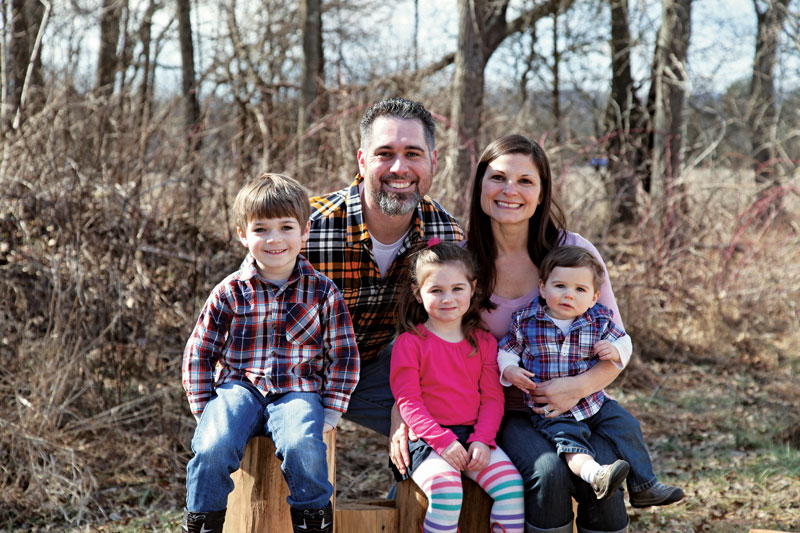
Each issue we’ll follow their progress, learn from their missteps and cheer on their successes. In the end, we’ll see how they went from raw land to their own slice of log home paradise. So c’mon in and be part of their log home journey.
There’s something warm and welcoming about wood, and building a log home represents the pinnacle of that experience. I expect I am preaching to the choir though, as you are reading Log Home Living. This magazine has been an extremely important tool to my wife and I as we traveled this road toward owning our own dream log home. We’re in the very early stages of building our home now and believe we might offer other prospective “dreamers” some insights into the whole process as it happens. We have an interesting story to tell, and a beautifully designed home to share. It’s in that spirit that I am writing this.
Here’s a little bit about us. My wife, Amanda, and I are from a small rural town in the middle of New Jersey’s farm country. Growing up, our paths crossed many times, but it wasn’t until college that we came to really know one another and our lives became permanently intertwined. As a couple we took numerous vacations to the mountains of Colorado and Utah. There we fell in love with each other and with log-and-timber mountain architecture. The seeds of our dream were sufficiently planted. Fast-forward 17 years and three children — Shane (5), Molly (3) and Logan (1) — and we had outgrown our current house.

Though we yearned for a mountain home, the untimely passing of our fathers (mine in 2010 from colon cancer at age 55 and Amanda’s in 2014 from heart disease at age 62) reinforced our desire to stay close to our New Jersey roots and our mothers. We made a bold decision: Our next home — our forever home — would embody the best parts of the western mountain log and timber design, set against a backdrop of our rural New Jersey valley views.
As regular Log Home Living readers, we knew there were Log and Timber Homes Shows around the country where were could visit with a variety of log home manufacturers all at once. So Amanda and I packed up our car and our then-one-year-old, Shane, and made the drive to the show in Philadelphia. From the moment we walked in, we knew owning a log home was in our future. Now we just needed to figure out how to make it a reality. 
First, we needed to find the land. We bided our time until a flag lot became available right down the road from where Amanda grew up and only a few miles from my own childhood home. This was the spot. We purchased the land — a beautiful 10-acre parcel in horse country — in 2013.
Then, using Log Home Living as our guide, we began reaching out to designers and architects, both locally and nationally. Our research led us to Custom Log (now Bitterroot Valley Log and Timber) in Missoula, Montana. I had rough sketches and a half prepared floor plan from a local architect, but I needed to reduce the square footage and modify it for log construction.
While visiting the folks at BVLT, I was introduced to Mark Schonrock of Design Company Homes, and the final design began. I was also fortunate to enlist Bronson Woodhull on my team. Not only is Bronson a builder with more than 30 years of experience, he’s a close family friend. In an undertaking as large and complicated as building a custom home, choosing the right people can make all the difference between success and failure.
Over the period of several months, preliminary designs flew back and forth across the ether, as Mark, Bronson, Amanda and I made tweaks to rooflines, wall angles, decks and a myriad of other details. Our kitchen was peppered with floor plan sketches and magazine clips for weeks. We made regular visits to the site and, using stakes and strings, we mapped the footprint with Bronson, who helped us make the right “siting” decisions to take advantage of the views and natural contours of the land. He showed us that visiting our property at different times of day provided a sense of which rooms would see the sun and when.
Let me tell you, moving strings is much easier than moving walls, and erasers are far less expensive to modify your future house than sledgehammers. It helped us truly envision our future home. If I could give one piece of advice to anyone ready to take the log home plunge, it’s plan, plan, PLAN. The more work you do before you break ground, the better off you’ll be. If you select a team you trust and take your time with your design, the later stages will fall into place seamlessly with (slightly) less stress, and be much more rewarding!




